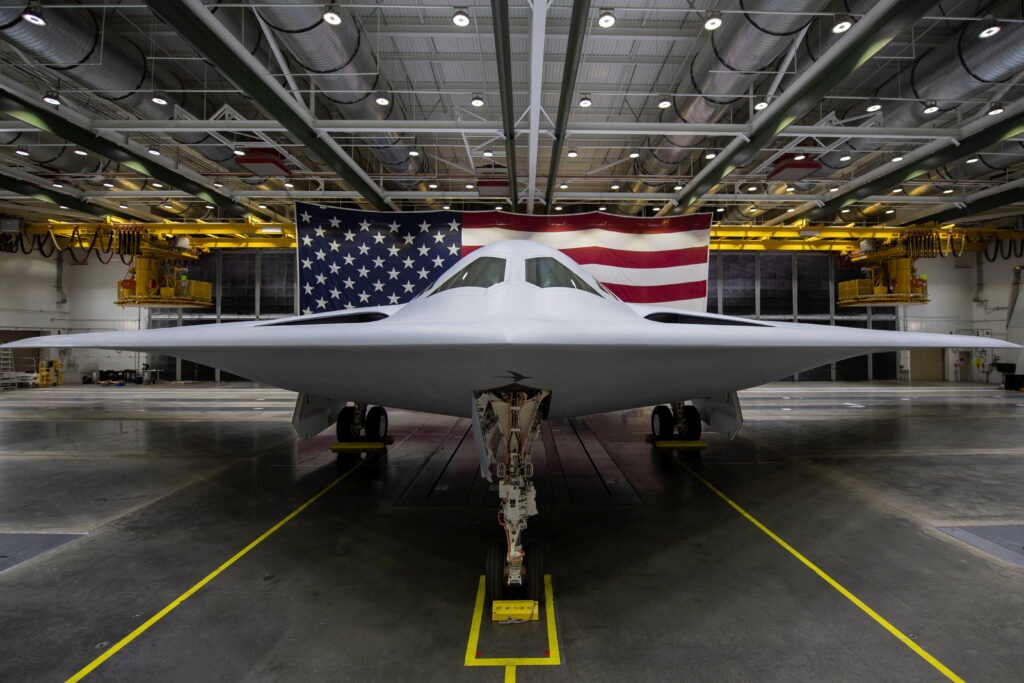Sustaining a strong and resilient defense industrial base is paramount to US national security and stewardship of the current world order. The inability to produce new and innovative defense capabilities at speed and scale sends the wrong message to sophisticated adversaries looking to test the waters, which prompted the Pentagon to release its first-ever National Defense Industrial Strategy (NDIS) on January 11. A modern defense industrial ecosystem is “key to integrated deterrence and building enduring advantages,” the NDIS explains in its foreword. “Should deterrence fail,” it adds, “the NDIS postures our industrial ecosystem to provide our warfighters the necessary capabilities—at speed and scale—to defeat any nation that attempts to harm the security of the United States, our allies, and our partners.”
The strategy acknowledges the dreadful plight nontraditional defense companies endure when attempting to partner with the Department of Defense, including prolonged periods required to adopt new capabilities. It also serves as a long-needed clarion call to modernize the US defense ecosystem. While the report has generated buzz across circles of stakeholders, exceeding the usual reach of such documents, this very popularity exposes a key paradox. The report’s strength as a rallying cry for a robust industrial base is hampered by an absence of specifics on implementation. Like a captivating manifesto light on concrete recommendations, the report risks igniting enthusiasm without a clear path forward. This feature may shield the strategy from naysayers poised to disagree with specific steps, but it also does little for acquisition managers and industry executives responsible for shaping defense industrial capabilities.
So, what does the NDIS do? The sixty-page report diagnoses an ecosystem struggling to keep pace with evolving threats and advancements in technology as a result of bureaucratic inertia, lack of agility, and insufficient investments in human capital and supply chains. Despite recent attempts at acquisition reform, the strategy recognizes the “valley of death,” the often-prolonged journey a capability takes from the government’s pilot stage to widespread adoption, as a lingering barrier to innovation adoption. The report continues by diagnosing the poor health of the US industrial base, including as a result of critical workforce shortages in the fields of science, technology, engineering, and mathematics (STEM) and advanced manufacturing. It also notes the dangers of fragile supply chains, espionage, and unfair trade practices, as well as the problem of insufficient economic deterrence to counteract foreign investment jeopardizing national security.
The NDIS is a step in the right direction. In just nine months, the Pentagon put together and released a multifaceted approach toward a holistic solution to revamping its industrial base. This approach acknowledges the interconnection of ongoing impediments and offers a rubric with shelf life for the next several rounds of Department of Defense budget requests and appropriations. However, the strategy also leaves important questions unanswered, including: How can the United States put it into effect? While that may very well be the job of the soon-to-follow implementation plan, the strategy itself often reads as if it were designed in a vacuum. It fails to account for critical impediments that would derail potential avenues of implementation, such as alarming budgetary constraints, “Buy American” provisions, and stringent export control restrictions. While it coincides with the National Defense Strategy, it does little to complement reality and take inventory of difficult challenges at home.
Budgetary constraints
Achieving the ambitious goals articulated by the NDIS would be an extraordinary and expensive undertaking. However, the report offers no indication of how additional resources will be secured or what compromises will be made to sustain them. Competing priorities within the US federal budget are enough to trigger opposition to a Department of Defense budget hike, and even more so during an election year, while offering trade-offs could prove equally polarizing among stakeholders and hinder progress as a result. Even if the NDIS’s priorities were effectively backed by appropriators in the fiscal year 2025 cycle, success will require sustained funding for years ahead.
The United States had a front-row seat to this phenomenon during the pandemic: Onshoring attempts only really worked from a business standpoint as long as pandemic-related federal funding sustained them. Without a clear and detailed plan to secure long-term federal funding or navigate trade-offs, the NDIS’s success will be constrained by short-term funding cycles and political agendas.
Internationalist goals amid a nationalist agenda
The NDIS is filled with references to US allies and partners, and it delivers a firm call to action for enhanced collaboration and cooperation. The strategy emphasizes the need for sustained global partnerships and acknowledges that by working together, “we and our allies and partners can address capacity and capability gaps, enhance production capacity and capabilities, boost economic advantages, and reinforce alliances.”
However, these internationalist themes in the strategy are up against “Buy American” provisions, which will ultimately limit opportunities for collaboration by prioritizing US-based procurement and alienating allies and partners as a result. While essential for safeguarding adversarial access to sensitive US technologies, export controls by design restrict access to technology with potential military applications or national security implications. These restrictions impede necessary technology transfers for co-development and interoperability. The NDIS does acknowledge the challenge posed by US export control regimes, such as the International Traffic in Arms Regulations and the Export Administration Regulations, but its acknowledgement is not enough to neutralize the impact on cooperation with allies and partners.
The United States’ first National Defense Industrial Strategy was a welcome red flag to the public on a bipartisan concern and has sparked necessary conversations about near-term implications and comparisons to China’s industrial capabilities. While effective in that right, any hope for success boils down to thoughtful and precise implementation guidance and a strategic approach to fiscal regulatory roadblocks.
As the Department of Defense gears up to unveil its implementation plan for the strategy, the spotlight should be on harnessing the right approaches to tackle the very deficiencies the NDIS identified. Here are three approaches at its disposal:
- Invest in capabilities that require public capital: The Department of Defense should build a case for long-term federal funding beyond traditional budgetary cycles by delivering a comprehensive strategy to solicit appropriations for fiscal years 2025-2030. This approach should focus on two key lines of effort: first, fully utilizing and expanding authorities granted by the Defense Production Act’s Title III to prioritize and fund essential defense capabilities and their manufacturing base. This will help mitigate risks associated with reliance on global foreign suppliers, effectively optimizing domestic production capacity. Second, the department should leverage public-private partnerships to co-invest with private capital, ensuring sustainable funding for these crucial initiatives. Such a partnership would allow the Department of Defense to tap into the private sector’s expertise, efficiency, and financial resources, which is likely to lower long-term costs and expedite innovation adoption across the Department of Defense. By implementing these measures, the Department of Defense has a better shot at securing the substantial resources necessary to successfully implement the NDIS.
- Renovate acquisition practices: The Pentagon should work to expedite long-needed acquisition reform tailored to speed and efficiency. The Atlantic Council’s Commission on Defense Innovation Adoption’s final report, released in January, offers several recommendations, including ways for the Department of Defense to streamline processes by simplifying and consolidating approval processes, eliminating unnecessary paperwork, and leveraging technology for automation. The Department of Defense should also standardize some procurement regulations and requirements across the services, which will further avoid duplication and delays. Finally, it should grant greater authority and decision-making power to program managers to navigate acquisition processes more effectively.
- Advance allied industrial integration. The Department of Defense must find ways to address challenges impeding the NDIS’s international collaboration objectives without jeopardizing US national security. It should encourage joint projects where allies manufacture components or subsystems, creating economic benefits and shared responsibility. In addition, it could implement a tiered approach, which prioritizes US companies for sensitive technologies while allowing qualified allied firms to work on other components, balancing security with collaboration. The United States could establish a spectrum of procurement preferences based on a risk-benefit assessment of technologies and potential partners: highest security concerns, which prioritize US production for sensitive technologies; moderate security concerns, which allow qualified allied companies to compete for contracts, potentially with offsets or coproduction requirements; and lower security concerns, which open competition for all qualified companies regardless of nationality.
Kathryn Levantovscaia is a deputy director in the Forward Defense program of the Atlantic Council’s Scowcroft Center for Strategy and Security. Prior to joining the Council, Levantovscaia served the US Chamber of Commerce as director for defense, aerospace, and acquisition policy.
Further reading
Fri, Jan 5, 2024
Overstretched and undersupplied: Can the US afford its global security blanket?
New Atlanticist By Kathryn Levantovscaia
The hollowing out of the broader US manufacturing base has made defense companies dependent on supply chains originating in, of all places, China.
Tue, Jan 16, 2024
Atlantic Council Commission on Defense Innovation Adoption: Final report
Report By
The DoD must accelerate defense innovation adoption from the leading edge of the private sector. This report has ten recommendations to do so and features eight vignettes that explore how these actions may play out in practice.
Wed, Jan 10, 2024
Commission on Defense Innovation Adoption tracker
Trackers and Data Visualizations By
Implementing reforms to increase the speed of defense innovation and capability development has been an increasing priority for policymakers in Congress and the Department of Defense (DoD) in the past year. Following the publication of the Commission on Defense Innovation Adoption’s interim report and final report, Congress and the DoD took actions to ensure defense […]
Image: The B-21 Raider, a new high-tech stealth bomber developed for the U.S. Air Force, is seen in an undated photograph in Palmdale, California, U.S., released December 2, 2022. U.S. Air Force/Handout via REUTERS.



